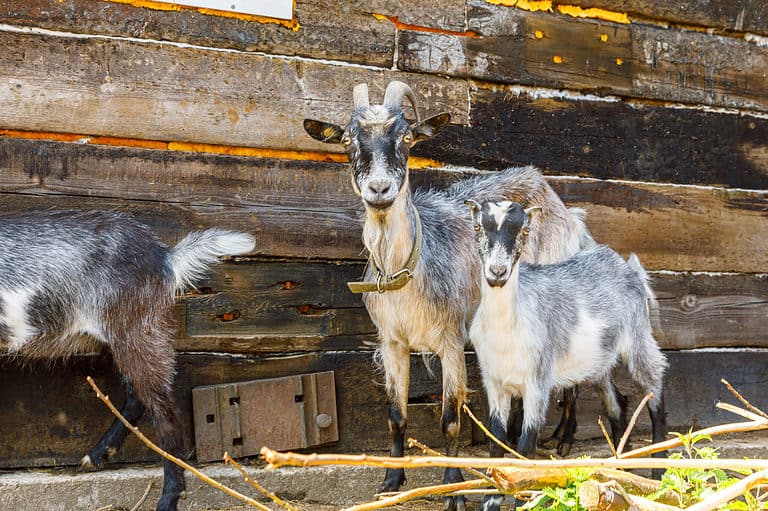Discover the Charm of Cute Bats: Nature’s Adorable Night Flyers

It’s time to marvel at the majesty of these remarkable nocturnal creatures—bats! There exists a myriad of bat species, ranging from tiny bumblebee bats to impressive flying foxes and peculiar Honduran white bats. Each kind brings something unique with it: captivating stories, vital roles in keeping our environment healthy, as well as astounding charisma that charms us all.
Let’s start this exciting expedition into discovering more about the captivating diversity among cute bat species which are facing threats against them, and also recognize what we can do to defend them.
Key Takeaways
Discover the captivating diversity of bats, from the bumblebee bat to flying foxes and more.
Bats play an important role in our ecosystem through pollination, pest control and other beneficial actions.
Support conservation efforts by promoting natural habitats, minimizing pesticide use & providing bat shelters!
Adorable Bat Species You’ll Love
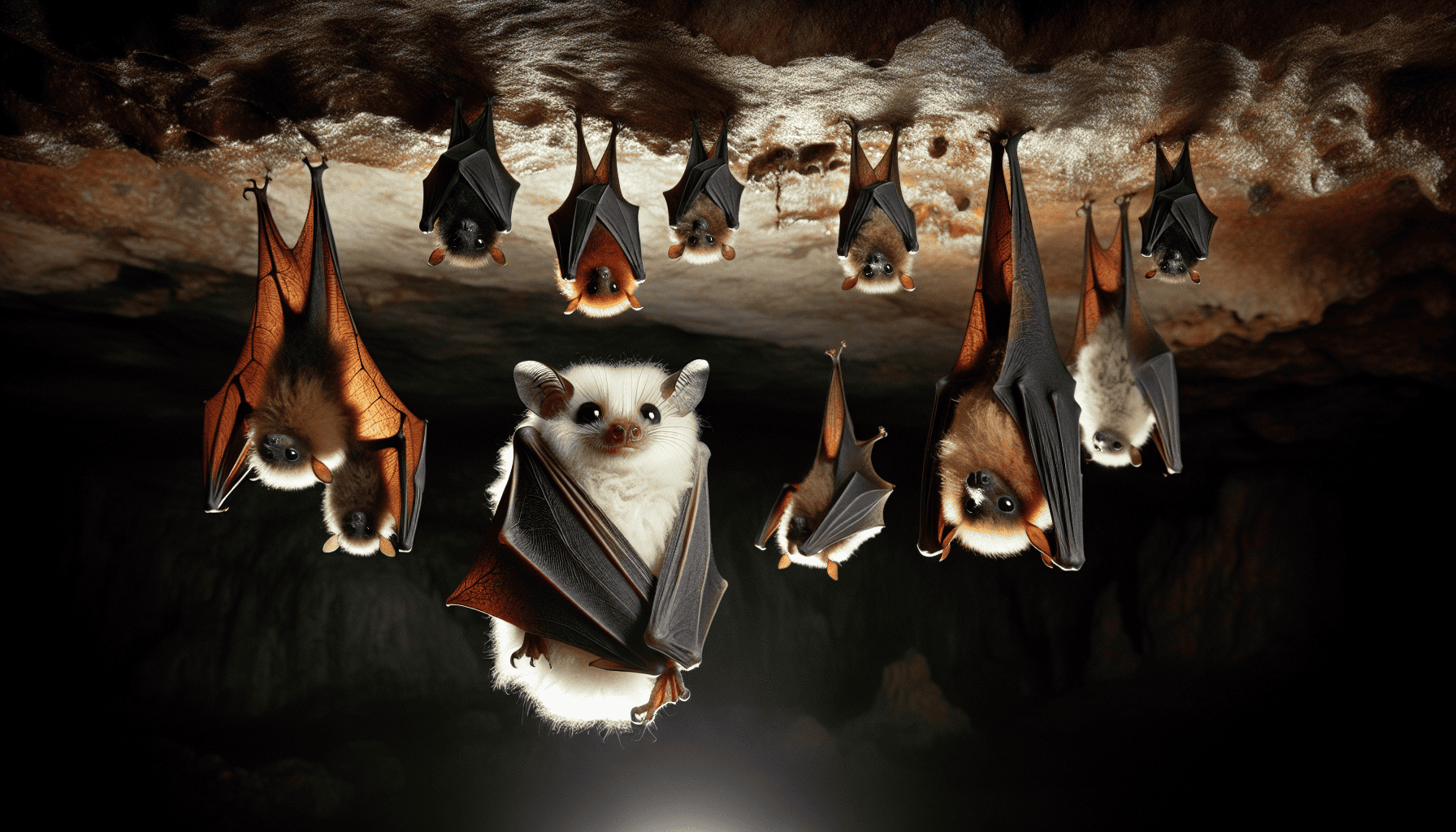
Bats, so often misinterpreted and feared, are truly amazing animals. The number of species is extraordinary with over 1,400 known to exist (ranging from tiny bumblebee bats to large flying foxes) that have each evolved distinct features and behaviors. Flying mammals with a capacity for continued flight, using echolocation as their guide, vital in seed dispersion and pollination – some able to live up to 30 years – there isn’t an area on the planet which they don’t inhabit apart from Antarctica! Plus these creatures also boast different eating habits too: devouring insects or blood, feasting on fruits, etc., confirming why these incredible creatures play such an important role in the ecosystem.
We explore more closely into this fascinating world by finding out about three particular types of bats. The tiny little brown bat specialised at catching bugs, the imposing Honduran whitebat boasting exceptional whiteness fur as well as its remarkable roosting capabilities, and lastly those eager fruit consumers otherwise known as flying foxes.
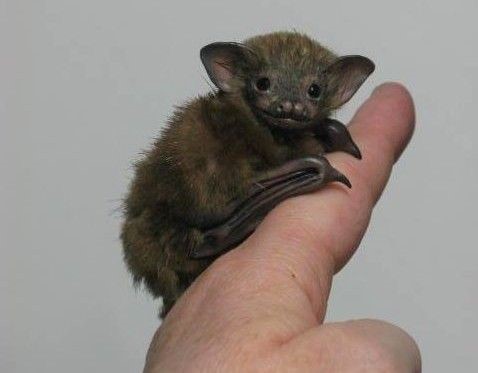
Bumblebee Bat
The bumblebee bat, also known as Kitti’s hog-nosed bat, is the smallest of all bat species in existence. This tiny mammal can grow up to an inch long and weigh no more than a dime, truly extraordinary! Despite its size, it still manages to find sufficient insects for hunting with remarkable effectiveness.
These tiny mammals inhabit limestone caves located close by where Thailand meets Myanmar borders and share similar roosting spots with california leaf nosed bats which highlights how essential these habitats are not only for this unique species but also other incredible creatures like the northern long-eared bat.
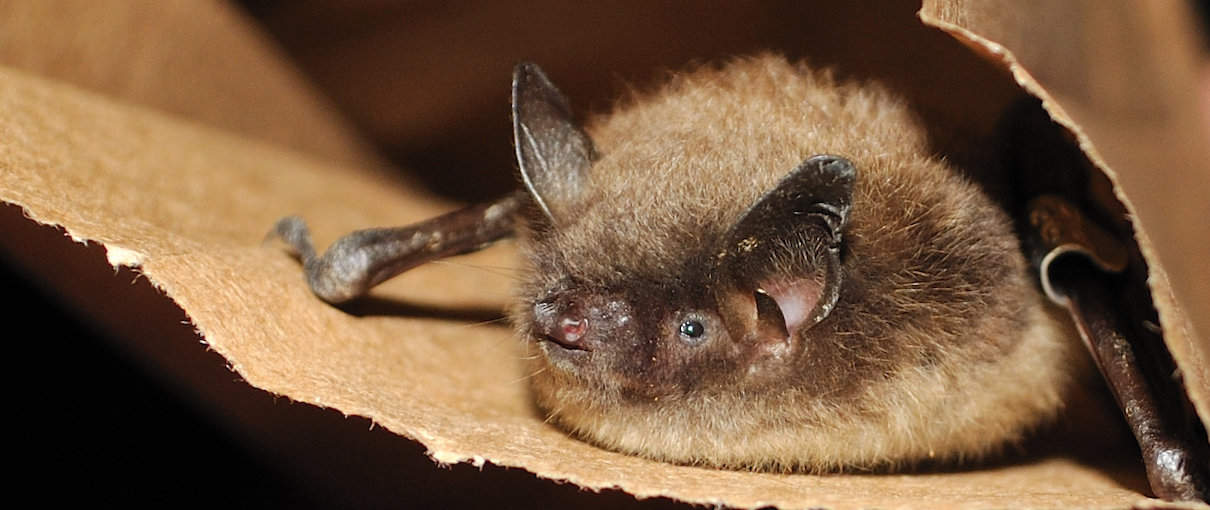
Little Brown Bat
The little brown bat is one of the most interesting species in the bat family. They are known for their upside-down posture when roosting, which many types of bats do too, including this variety. You’ll often find them around water bodies like rivers and lakes in North America as they mainly feed on insects, making them an essential part of local ecosystems by controlling pest populations naturally.
So take a moment to appreciate these fascinating nocturnal creatures that help maintain balance within our environment! The next time you see a brown bat remember it’s not just another pretty face at night. It does its bit as well!
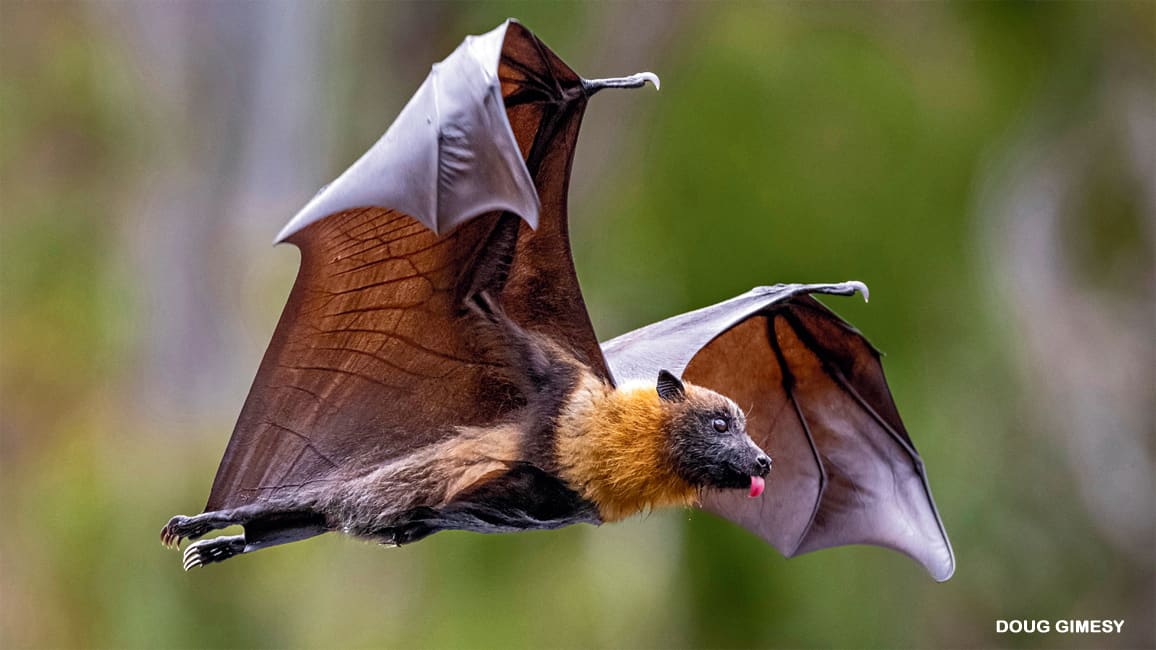
Flying Foxes
For those who are captivated by beautiful bats, the flying foxes won’t let you down. These fruit-eaters differ from other species of backyard ones. They can be found in large sizes and have a significant role to play when it comes to pollination and seed dispersal for tropical environments. There is Indian Flying Fox as well as Spectacled Flying Fox that dwell in India’s subcontinent or Australia respectively.
They consume different kinds of fruits, such as coconuts, leaves, while also relying on some insects, rendering them an essential part of nature due to their help with plants’ fertilization and seeds scattering, which enhances rainforest richness across tropic areas where they live near us all.

Honduran White Bat
The Honduran white bat is a remarkable creature, with its immaculate coat of fur that captures the eye. Feeding primarily on Ficus colubrinae figs, these animals have created their own unique relationship between themselves and their environment, an example which can be observed in many other species of bats as well. The fascinating practice they possess for forming tents from broad leaves by using teeth shows how each bat species has differentiated itself through adaptation to different situations. Making them interesting studies when it comes to both research and conservation efforts here in Central America.
The Importance of Bats in Our Ecosystem
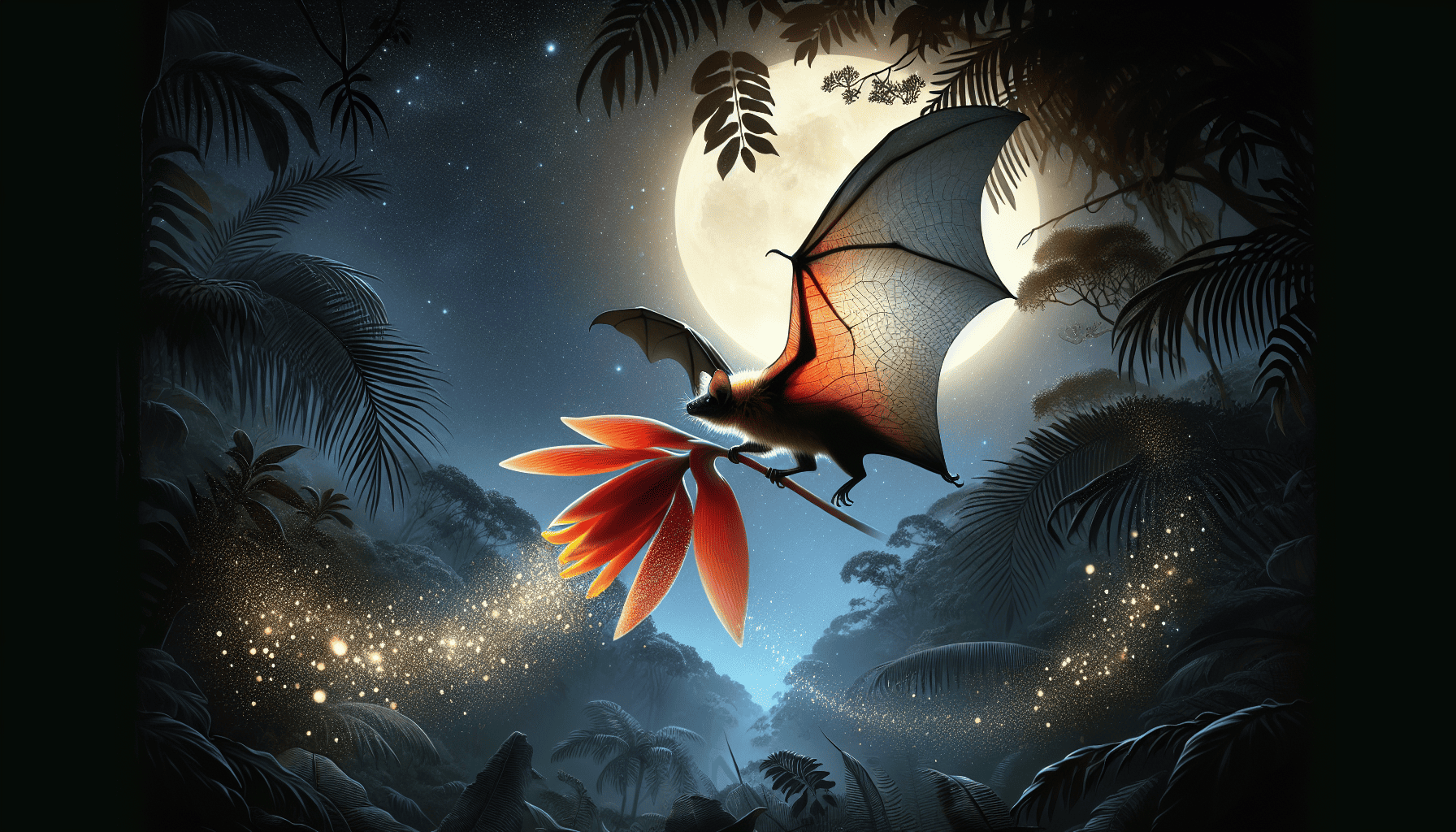
Let’s now look at the critical role bats play in our environment. From acting as pollinators of tropical plants to controlling pests, they have a significant effect on global ecosystems and economy, saving U.S agriculture billions each year! Whether it be flying foxes or small bumblebee bat species, all kinds of bats are important for keeping nature in balance. We will investigate how these creatures contribute to pest control and pollination below, stressing their significance ecologically speaking.
Pollinators of Tropical Plants
The night sky is enriched by the presence of bats, and they also perform a very critical function in the pollination process for many plants growing in tropical areas. When consuming nectar from flowers, these creatures inadvertently transport pollen to other similar plant species, resulting in fruit formation and seed production which ensures their survival. This role that bats have when it comes to fertilization contributes enormously to preserving biodiversity as well as promoting ecological balance.
As an example, we can look at agave – this particular kind of plant will only bloom after being visited by one specific type of bat looking for its sweet nectar reward. Durian fruits are largely dependent on them too along with giant cacti found across those regions – emphasizing just how essential bats really are when it comes to safeguarding our ecosystems’ health and variety.
Natural Pest Controllers
Bats are a great form of natural pest control, providing economic benefits to farmers by reducing crop damage and minimizing the need for pesticides. One species in particular is incredibly effective—the Mexican Free-tailed Bats—because they can eat up to half their body weight every night when feeding on insects, with pregnant or nursing mothers having an even greater capability, devouring as much as one hundred percent! This helps keep insect populations under control while also helping gardens and farms thrive.
Threats to Bats and Conservation Efforts
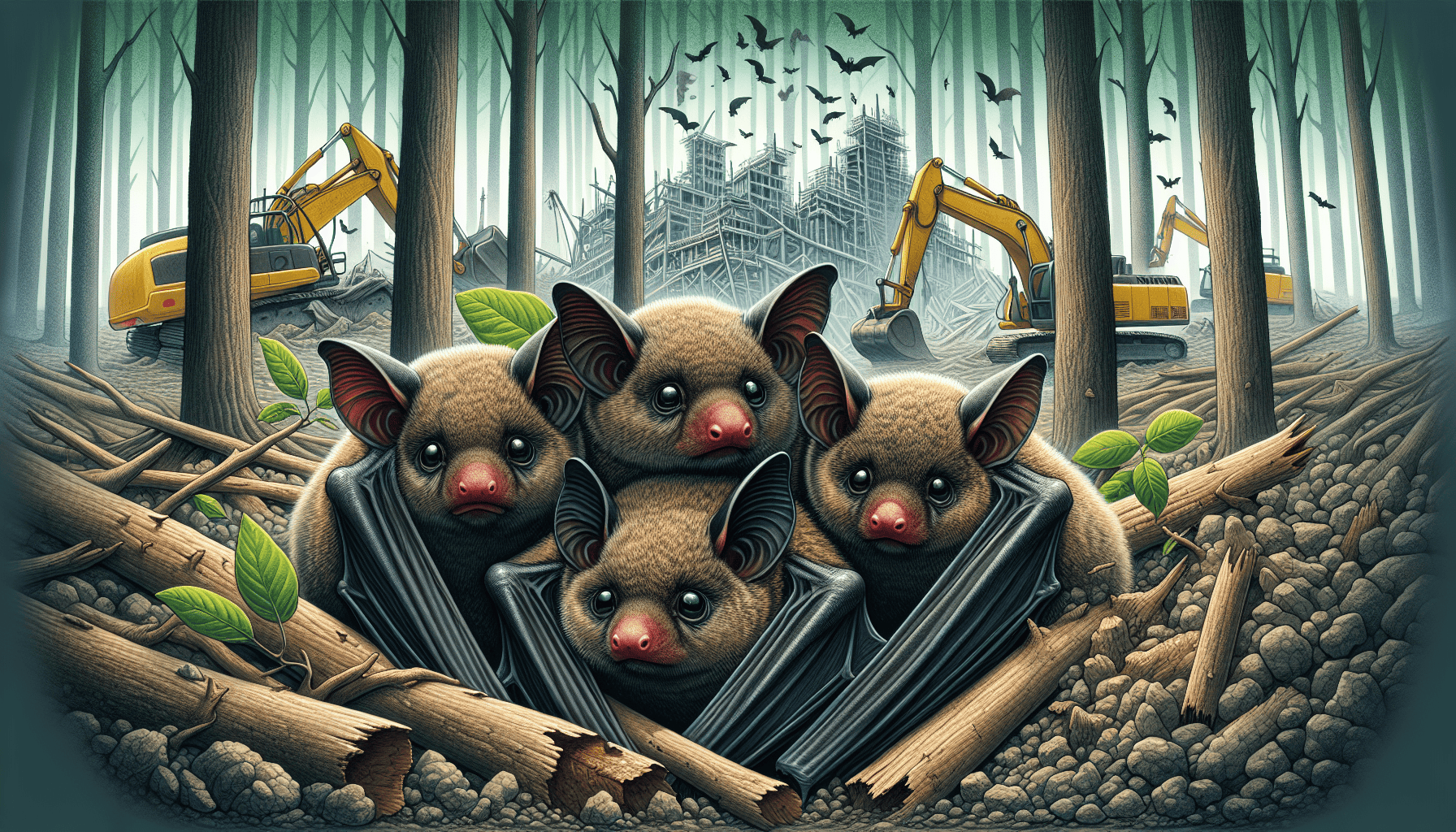
Bats are essential to our environment, yet they face a number of challenges. Deforestation and human interference have resulted in drastic decreases in bat habitats globally. Diseases such as white-nose syndrome continue to push hibernation populations towards extinction within North America. There is hope – organizations like Bat Conservation International strive for the preservation of these night fliers and their vital contributions to nature’s balance.
To this end, we must ensure that efforts aimed at mitigating habitat loss or treating disease outbreaks succeed so bats can thrive with us into the future!
Habitat Loss and Human Activity
Bats worldwide are facing endangerment due to human activity primarily causing habitat loss. Numerous efforts have been made in the form of conservation projects and environmentally friendly practices towards protecting bats from extinction. Despite these adversities, such as climate change and diseases, more than half of bat species found across North America has displayed resilience by successfully adapting to changes in their habitats, proving that nature is incredibly adaptive if we give it a chance through necessary initiatives like conservation measures for safeguarding our wildlife.
White-Nose Syndrome
White-nose syndrome, an infectious fungal disease devastating bat populations in North America since 2006, has led to a greater understanding of the significance of conserving these animals. As such, research and proactive strategies have been undertaken in order to mitigate its effects on those hibernating bats facing mortality rates far beyond average as well as possible regional extinction.
By studying how P. destructans is transmitted and managed over time, we are hopeful that it will result in protective methods which can halt or at least lessen the rapid decline. White nose syndrome brings with it, allowing us all to take part in ensuring healthy numbers for our local bat population now and into the future too.
Bat Conservation International
Bat Conservation International has made a lasting impact on the global protection of bats since its founding in 1982. The leading defender of these species has achieved many milestones, such as discovering an unprecedented maternity roost for a bat variety and helping to prevent extinctions around the world.
The experts at Bat Conservation International carry out detailed surveys that provide crucial information about movements, habitats, and lifespans, which is used when crafting their conservation initiatives. In doing so, they have uncovered huge summer gathering sites for endangered types like Indiana Bats – Proving their commitment to protecting our furry friends from harm’s way!
How You Can Help Protect Bats
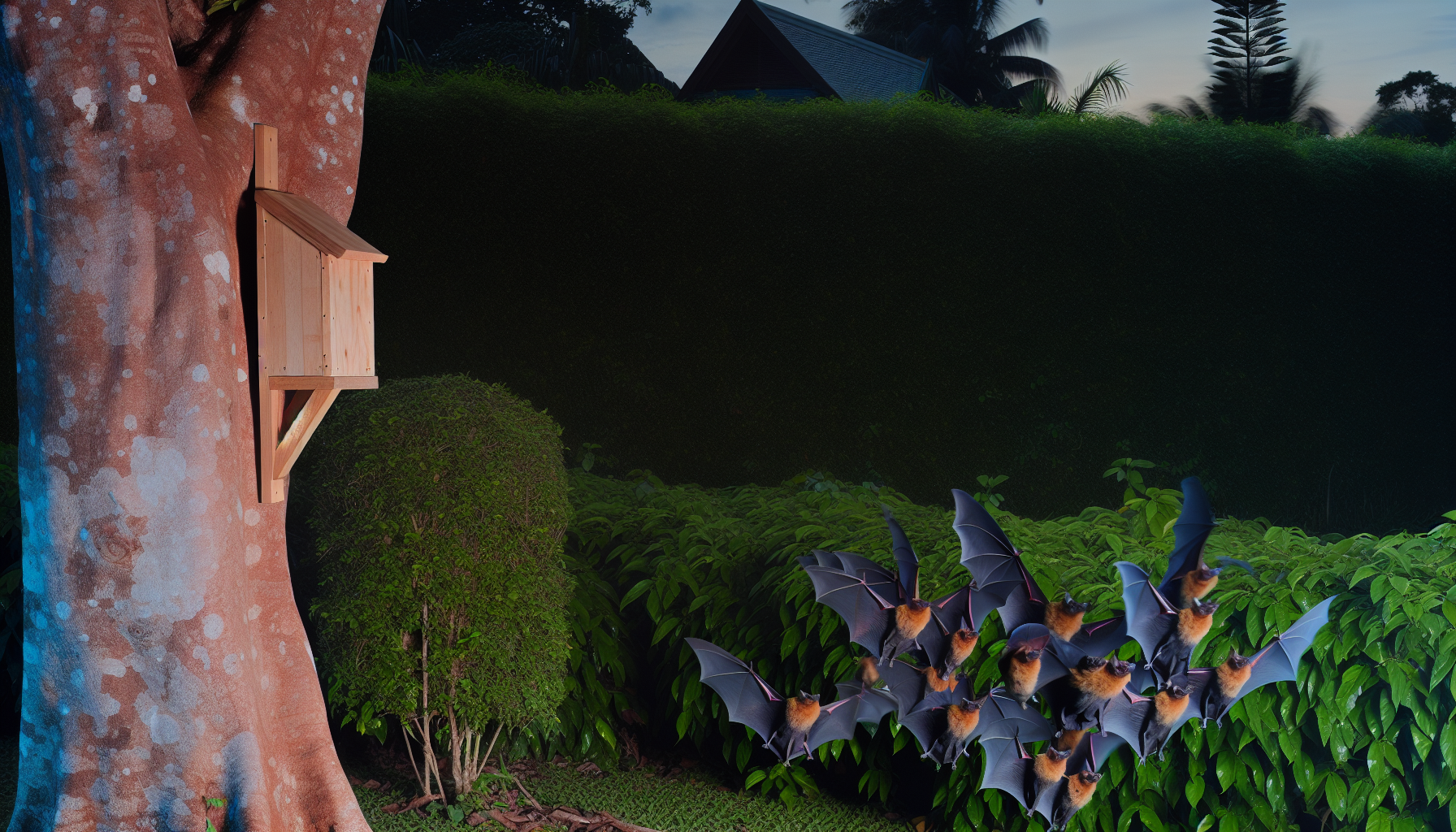
We all have the power to protect bats and their habitats. There are many easy things we can do, such as cultivating natural homes for them, decreasing our use of pesticides and creating bat sanctuaries that will make a huge difference in keeping these creatures safe. Here is what you need to know about preserving bats: there is no task too small! Planting native plants around your home or opting for organic produce can be just as impactful when it comes to saving these interesting animals. If possible, construct a dedicated space like a bat house so they may find refuge near residential areas more often than not.
Promote Natural Habitats
One of the ways to assist bat conservation is to cultivate natural habitats. Native plants and trees offer numerous benefits, including providing a plentiful source of food for bats who feed on insects, and providing shelter that guarantees safety living quarters for them. By incorporating various native vegetation species into your garden throughout each season, you can make an immense contribution towards improving their habitat whilst also enhancing your own environment’s beauty with flowers like garden phlox, wild hydrangea and common evening primrose. As such, it goes without saying that this will have great positive repercussions not only aesthetically but more importantly in encouraging healthy populations of local bats too!
Minimize Pesticide Use
When looking to reduce the usage of pesticides in your garden, one helpful way is by supporting bats. These critters aid with pest control naturally since they eat many insects. Thus eliminating the need for hazardous chemical sprays and other conventional bug removal methods which can be detrimental to their health. Organic farming initiatives also assist them in this effort as a cleaner environment means healthier bat habitats.
Next time you encounter one of these furry creatures within your yard, remember that it’s partaking its own kind of natural insect extermination! Doing so will not only benefit plants but have positive effects on bats too – allowing us all an ecologically sounder shared space going forward.
Provide Bat Shelters
Creating bat shelters in your outdoor space is a great way to support the preservation of bats. These roosts or ‘bat houses’ provide havens for them, allowing their survival even when located close to human development. Installing one near you not only brings this animal species closer, but also introduces natural pest control measures into your surroundings!
Follow these steps on how to put up such a habitat: Securely attach it somewhere safe and solid like trees or poles, Face it southward so that its occupants have enough sunlight, And position it close by foliage as an extra shield from predators. Having an abode for bats offers positive outcomes with regards both environment and wildlife, making conservation more achievable while giving us remarkable neighbors at home!
Bat Myths and Misconceptions
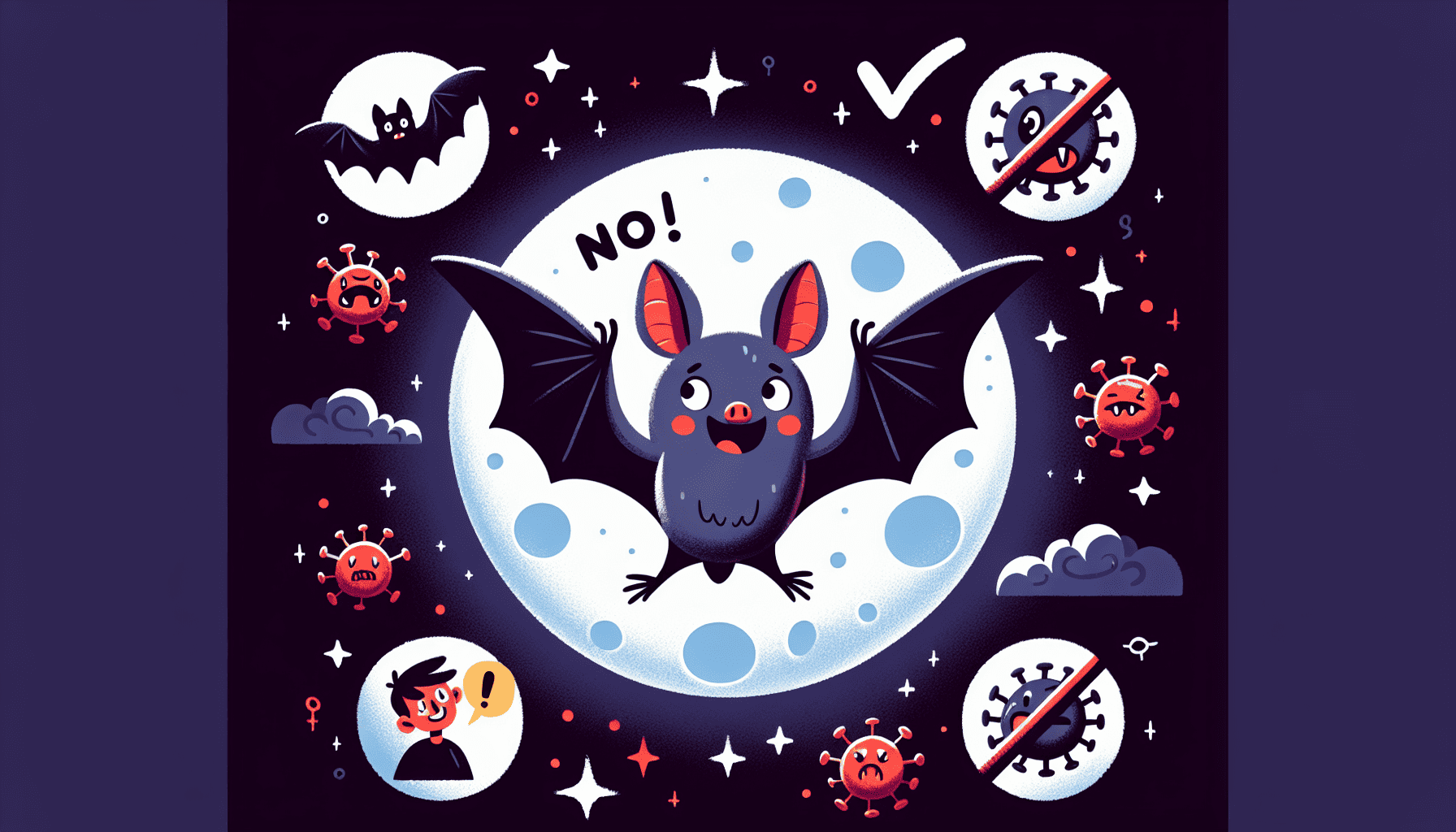
Bats have important ecological roles and they are often underrated because of a widespread lack of knowledge about them that includes untrue myths. For example, people typically link bats to vampires or diseases. These assertions stem from fear rather than facts. In the following sections we will discuss common misconceptions about bats and demonstrate their true nature in order to aid with conservation efforts for this species.
Understanding more information concerning bat behavior can help us shift inaccurate perceptions into ones which actively contribute towards protecting it’s survival- while upholding all pertinent data regarding its many benefits as well!
Vampire Bats
Out of the 1,400 types of bats discovered so far, only three species are known to feed on blood. These vampire bats inhabit Central and South America where they mainly target livestock rather than humans. Even though there is a common misconception regarding their violent behavior, these creatures have remarkable adaptations that allow them to locate prey and even share food between members in their colony without inflicting serious damage upon it. This makes vampires interesting subjects for researchers instead of being feared monsters as often thought by popular culture.
Rabies and Disease Transmission
Bats often get a bad rap when it comes to rabies, but the truth is that only very few of them carry the virus. In fact, research suggests just 1% or less have been infected with rabies. Thus, this means direct contact with bats isn’t likely to be hazardous for humans in terms of disease transmission. It’s important though that people do take appropriate precautions – like not coming too close and seeking medical attention if scratched or bitten – as an extra safeguard against any potential risk from exposure. After all, these animals should still be respected. There’s no need to handle them unnecessarily!
Summary
As we complete our exploration of the fascinating bat world, it is hoped that you’ve developed a greater appreciation for these beloved night time fliers. From the little bumblebee bats to flying foxes and their preference for fruits, there’s plenty of variety in this realm. Bats play an important role in preserving ecological balance by performing duties such as pollinating and controlling pests naturally.
Unfortunately though, they encounter many hazards like destruction of habitats or illnesses. Still with humans’ sustained work towards conservation and having great capacity to adapt –bats manage to continue prospering.It all begins with each person making some effort – whether setting aside natural environments, limiting pesticide usage or even providing shelter for them at home. Thus when looking up into evening sky, seeing a tiny silhouette will remind us not only that you are admiring something quite amazing but also witnessing its essential role exist along side ours too.
Frequently Asked Questions
What is the cutest breed of bat?
This species of bat, the Honduran white bat, is renowned for its wonderful and rare fluffy-white fur. It’s undoubtedly one of the cutest types of bats around!
Can a bat be a pet?
Due to their wild behavior and the various health risks involved, keeping a bat as a pet is not recommended. Also, it may be difficult for an individual to acquire any necessary permits that could possibly allow them to have one of these creatures living in captivity.
Which bats are friendly?
Vampire bats have a surprising connection with humans, as they often approach them when called by their names. This indicates that these species of bats can be deemed friendly towards us. Not only do the creatures respond to our call, but many bat owners across cultures form bonds and interactions with vampire bats due to this extraordinary phenomenon.
Are all bats bloodsuckers?
Out of the many bat species, only three feed on blood. Even though some bats are associated with being bloodsuckers, this is not true for all types of these mammals as there are more than 1,400 different varieties that do not partake in these mammals.
What role do bats play in our ecosystem?
Bats have an essential purpose in nature, acting as natural insect pest controllers, facilitating the pollination of plants and aiding with seed dispersal. They are invaluable for our environment’s stability.

